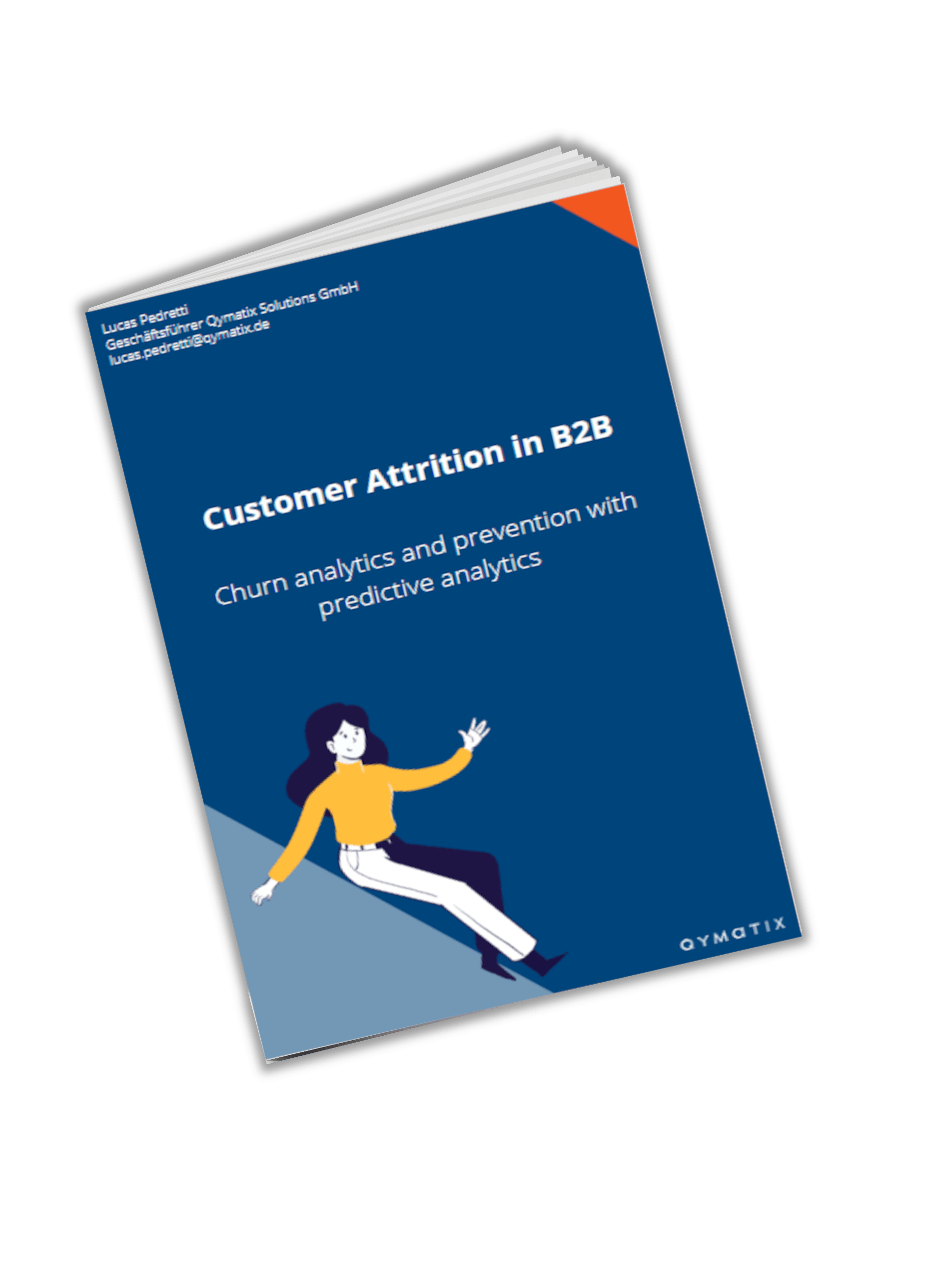How to define customer churn in B2B?

Please enter your Email address
B2B Churn Rate: Definition and Calculation.
Business-to-Business (B2B) companies depend on building and developing long-term relationships with their customers to be financially successful.
However, over time, some customers will stop buying or will defect to the competition. Sales managers define this situation as “churn” or “customer attrition”. Managing and reducing customer churn is one of the most important, yet sometimes overlooked job of the sales leader.
In B2B, customer relationships usually extend over several years, and sales cycles can be months long. There is here no recipe to describe customer churn. Sales managers should define customer attrition in the way to suits their business model best. Furthermore, which KPI should a sales team use to measure churn?
Finally, sales leaders should work on reducing the chances of customers churning. They should timely discover the customers at risk of defecting. Besides, executives should work on the possible causes of attrition.
What is customer churn and churn rate?
In simple words, the customer churn or attrition rate is a measure of the number of accounts that stop buying over a specific period.
Is there a difference between churn and attrition? In practice, no. There are only different idiomatic interpretations. Analysts often associate churn with frequent turnover. In comparison, they understand attrition as the process of reducing something’s effectiveness through a sustained attack.
Businesses sometimes can make a distinction between voluntary churn and involuntary churn. Voluntary churn refers to the conscious decision by a customer to switch to another supplier or service provider. Involuntary churn is the result of a force majeure, such as a business entirely abandoning a market or discontinuing a product-series. Both are equally bad. We will not differentiate between them in this article.
Help me to define customer churn in my company.
Sales and marketing practitioners employ the term “customer churn” in many contexts. In the B2B sector, they use it primarily regarding the customer base whose relationships are contractually regulated. For example, the churn rate is a central factor for businesses with a subscriber-based service model or comparable recurring business models.
In plain, the churn rate in B2B refers to the proportion of subscribers or contractual customers who leave a supplier during a given period.
Contractual customers or subscribers can have different interpretations, depending on the industry or business model. One can post the same question about the “given period”: one month or one year?
Define customer churn by selecting the customer based and the time-period.
The first step to define and estimate your customer churn or attrition is to select your customer base. This point looks easy, might be tricky. Who is, indeed, “a customer”? A company that buys occasionally? A regular customer? A subscription-based purchaser?
Please keep it simple. Take the one definition that better suits your business model. For example, if your company is a classic B2B distributor or manufacturer of components, take a list of all the customer who bought in a given period. Estimate how many times in average each customer ordered in this given period. Use this average to split from regular and occasional customers.
Now take a given period. This decision again can be tricky. Should you choose one year? One month? It depends again on your business model.
Specifically, it depends on the length of your sales cycle. If you are a B2B sales distributor working only via online channels, your sales cycle might be a couple of hours or days. On the other extreme, if your company is a manufacturer of complex components, the average sales cycle might reach months or years.
Again, please keep it simple. Take a time-period that makes more sense to your business model. Noteworthy is that the time-period you take should not be shorter than your average sales cycle. Twice your average sales cycle should do. Avoid taking longer than one year. Sales cycles longer than 12 months suit some business models only.
How high can your customer churn be? Customer churn rate by industry.
Now, let’s define your customer churn or churn rate as the proportion of customers or subscribers who leave your company during the given period you selected.
Not every customer carries the same weight. It is interesting also to estimate the “revenue churn”. The revenue churn rate is the amount of lost revenue in the given period divided by the total sales at the beginning. Depending on how your customer base is buying, the revenue churn rate might be higher or lower.
There are some broad guidelines on how high your customer churn can be. First, it cannot be zero. If your customer churn is zero, you are not defining it correctly, and you will not be able to reduce it. Retake a look at your definition.
On average, B2B companies can expect an annual customer churn rate of around 11%. However, this rate varies greatly depending on the industry and country. It averages 24 % in office supplies, between 10 % – 14 % for software-as-a-service companies and 31 % per year in telecommunications.
Have an ERP System? You’ve Got Data!
The acronym ERP stands for enterprise resource planning. It refers to the software systems that organisations use to manage daily business activities, such as accounting, procurement, manufacturing and sales.
Today, businesses of all sizes and manage (almost) every aspect of their operations with an ERP system.
Similarly, a CRM (customer relationship management) system is an indispensable tool for B2B sales teams. Therefore, no sales leader should be surprised at how much historical data they are already recording.
Got an ERP? Got a CRM? Then you’ve got data. Both your ERP and CRM systems offer all the information you need. Export and analyse your CRM and ERP data based on the definition of customer churn we presented your above.
How to define customer churn in B2B – Summary:
Customer churn is a possible indicator of customer dissatisfaction, cheaper or better offers, or more successful sales or marketing from your competitors.
By defining and measuring customer churn, companies can adopt appropriate retention approaches, rather than only seeking to acquire new accounts.
Measuring customer churn or attrition is the first step in pursuing an effective retention strategy. By implementing a retention strategy, companies can benefit from lower servicing costs, coupled with higher revenues.
B2B organisations can make the difference between a successful financial year or a miserable one by clearly defining and reducing customer churn.
In B2B, where sales cycles are long, and customer relationships usually breed over several years, sales managers should define customer attrition to suits their business model. Defining and reducing customer churn is a critical task for the sales manager.
For some companies, a client churned might be described as a buyer not closing his following deal with them, or a customer inactive for longer than a quarter.
Successful sales executives define the method the better suits their business model. They discover the causes of customer defection and develop and implement a retention strategy and measure its results.
Do you have any further questions about how to define customer churn in B2B? We are happy to help!
Free eBook for download: Churn analytics and prevention with predictive analytics
Managing and reducing customer attrition is an essential task of a sales manager. Sadly, sales executives often overlook customer churn in practice.
Download the free eBook now.
- We will use this data only to contact you for discussing predictive sales KPIs. You can read here our declaration on data protection.

Further Read:
Customer Success: How Innovative Companies Are Reducing Churn and Growing Recurring Revenue.
Analyzing Customer Churn using Azure Machine Learning

